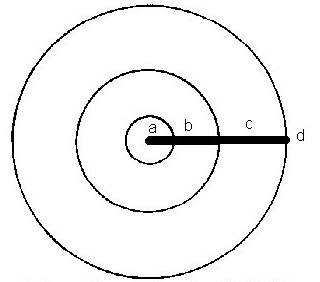BACKGROUND:
Scientists have determined that the center of the
earth is 6371 km below the surface. But how has this been determined? Many
people might answer that question by saying scientists can drill into the
Earth with machines. However, the drilling rigs that scientists use can only
drill about 20 km in the Earth which is not very deep! In other words, we
can only drill into upper part of the crust of the earth. Extremely high
temperatures and pressures within the Earth make drilling into it very
difficult.
Earthquakes are caused by the sudden movement and
fracturing of rock masses along preexisting faults. A fault is a broken
surface within the Earth’s crust. The point on the fault at which the
displacement begins is called the focus of the earthquake. The point on the
surface of the earth directly above the focus is the epicenter. Your
students need to understand that an earthquake happens in rocks that have
been stressed. This stress is stored until the strength of the rock is
exceeded. The actual break (the earthquake) then releases the energy. This
energy travels in the form of seismic waves.
The seismic waves generated by an earthquake can be
recorded and measured on a seismograph. The interpretation of the waves
provides seismologists with a way of "seeing" into the inside of
the Earth. The waves produced by earthquakes travel through the Earth and
bounce off different features of the Earth's interior. The patterns they
form after bouncing off these features can be used to create images of the
interior.
Earthquakes generate many different types of seismic
waves. Two major types are P (push/pull; compressional, or primary) and S
(shear or secondary). There are some basic rules that you need to
understand. P-waves are faster than S-waves; S-waves cannot travel through
liquid; P-waves can travel through liquids and solids, and both types of
waves go faster through denser rock and slower through liquids. These basic
facts (plus many more) help geologists and seismologists to interpret the
inner structure of the Earth. For example, when S-waves are not received by
a seismometer, it suggests that a liquid layer is present inside the Earth
which we call the outer core.
PROCEDURE:
 The students have learned that most earthquakes occur in the outer
most portion of the Earth. Draw a picture of the Earth on the board as
shown to the right. A = 1200 km (inner core); 2200 km (outer core); C=
2900 km (mantle); D = 7-100 km (crust). Ask students how far they think
it is to the center of the earth from the surface. Have some volunteers
come to the board and place an X at the depth to which they think we can
drill.
The students have learned that most earthquakes occur in the outer
most portion of the Earth. Draw a picture of the Earth on the board as
shown to the right. A = 1200 km (inner core); 2200 km (outer core); C=
2900 km (mantle); D = 7-100 km (crust). Ask students how far they think
it is to the center of the earth from the surface. Have some volunteers
come to the board and place an X at the depth to which they think we can
drill.
- Ask
the students how they think scientists know what is inside the Earth.
Explain that scientists can study the patterns of seismic waves released
by earthquakes to determine the Earth’s internal layers. You do not
have to give much detail, just dispel the notion that we can drill to
the center of the Earth
- You may want to have students make a paper plate model of the inside
of the Earth. Instruct students to label layers as in the diagram. Label
depths as follows: A = 1200 km (inner core); 2200 km (outer core); C=
2900 km (mantle); D = 71 km (crust).